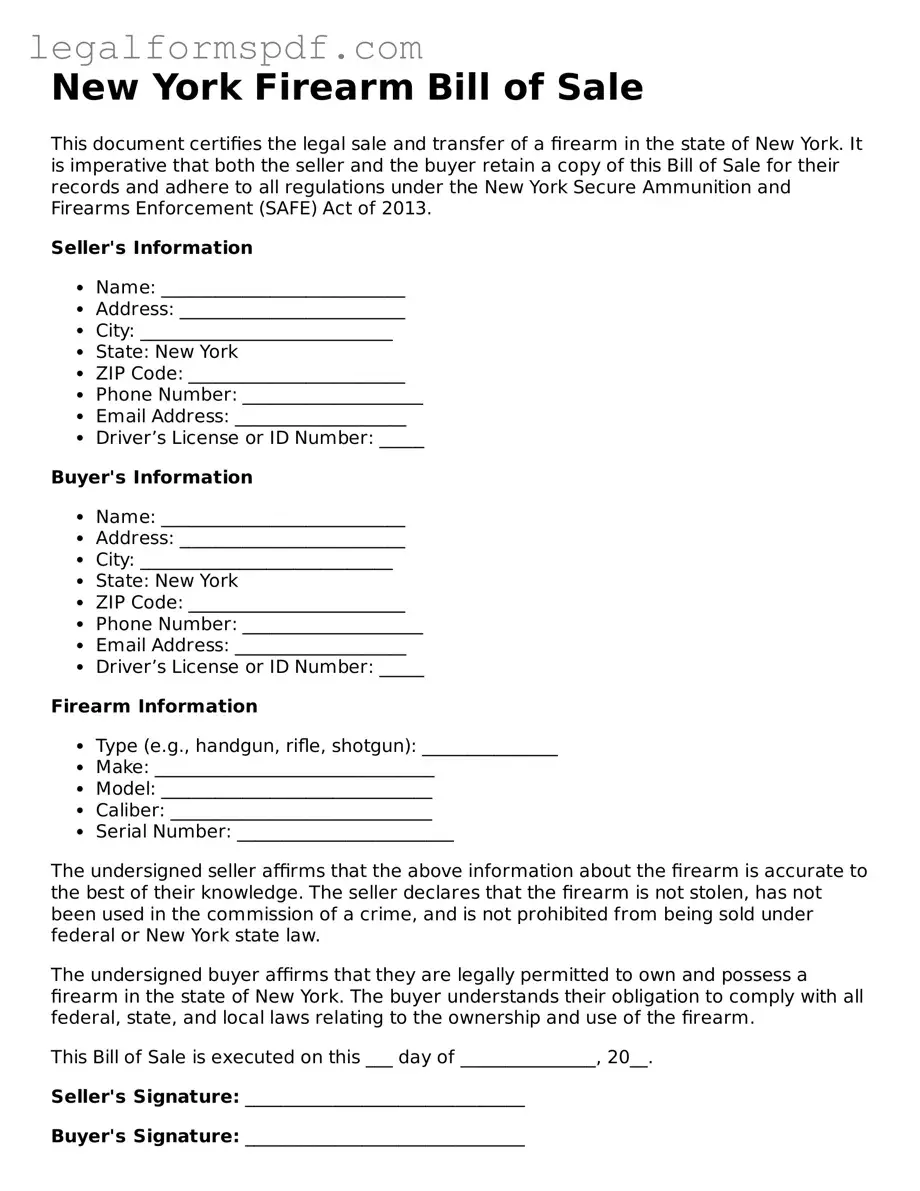What is a New York Firearm Bill of Sale?
A New York Firearm Bill of Sale is a legal document that records the sale and transfer of a firearm from a seller to a buyer within the state of New York. It provides proof of purchase and details the terms and conditions of the firearm transaction, ensuring that the transfer complies with state laws and regulations.
Do I need a Firearm Bill of Sale to sell a firearm in New York?
Yes, a Firearm Bill of Sale serves as vital documentation for both the buyer and the seller, providing a record of the transaction. It is highly recommended to complete a bill of sale when selling a firearm in New York, as it proves the change of ownership and can protect both parties in case of future disputes or questions of legality.
What information should be included in a New York Firearm Bill of Sale?
The New York Firearm Bill of Sale should include essential information such as the full names and addresses of the buyer and seller, the date of the sale, the make, model, caliber, and serial number of the firearm, the sale price, and signatures of both parties. It may also detail the firearm's condition and any other terms agreed upon by both parties.
Is notarization required for a Firearm Bill of Sale in New York?
No, notarization is not a requirement for a Firearm Bill of Sale in New York. However, getting the document notarized can add a layer of legal protection and validation to the integrity of the document, ensuring that the signatures are verified.
How does a Firearm Bill of Sale protect the buyer?
A Firearm Bill of Sale protects the buyer by providing a legal document that evidences the legality of the purchase and the ownership of the firearm. It serves as proof that the buyer lawfully acquired the firearm, detailing the transaction's specifics, including the date and the conditions of the sale.
How does a Firearm Bill of Sale protect the seller?
For the seller, a Firearm Bill of Sale acts as a record that they have transferred the ownership of the firearm to the buyer, potentially relieving them of liability should the firearm be used unlawly or found in adverse conditions in the future. It confirms that the seller has fulfilled their legal requirement to document the sale.
Can a Firearm Bill of Sale be used for registering a firearm in New York?
The Firearm Bill of Sale alone may not be sufficient for registering a firearm in New York. The state may require additional forms or background checks per its laws. However, the bill of sale can serve as part of the documentation needed for the process.
What should I do with the Firearm Bill of Sale after the transaction?
After the transaction, both the buyer and the seller should keep a copy of the Firearm Bill of Sale for their records. It is important to store the document in a safe place, as it may be required for future reference, such as for legal purposes or when the buyer decides to sell the firearm.
